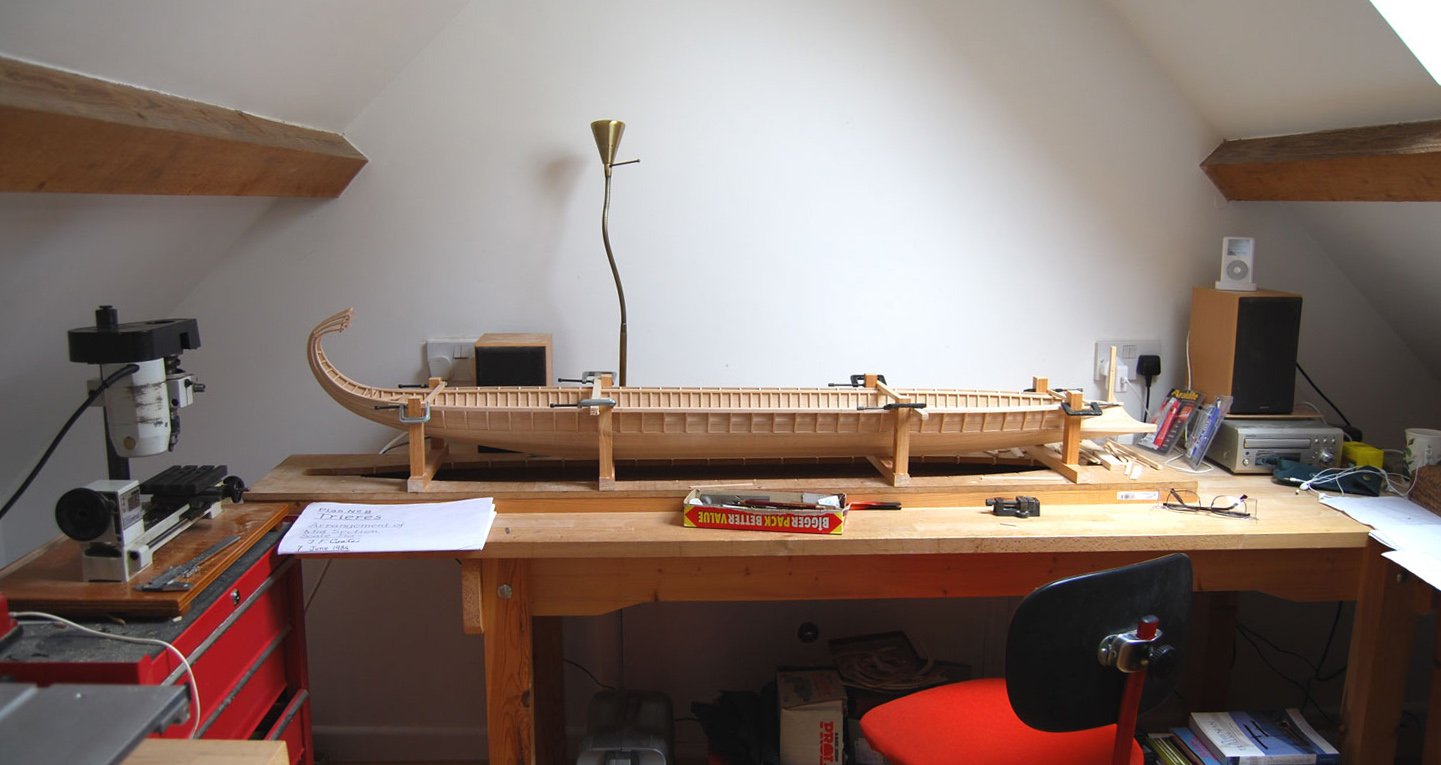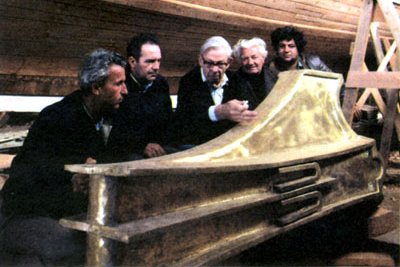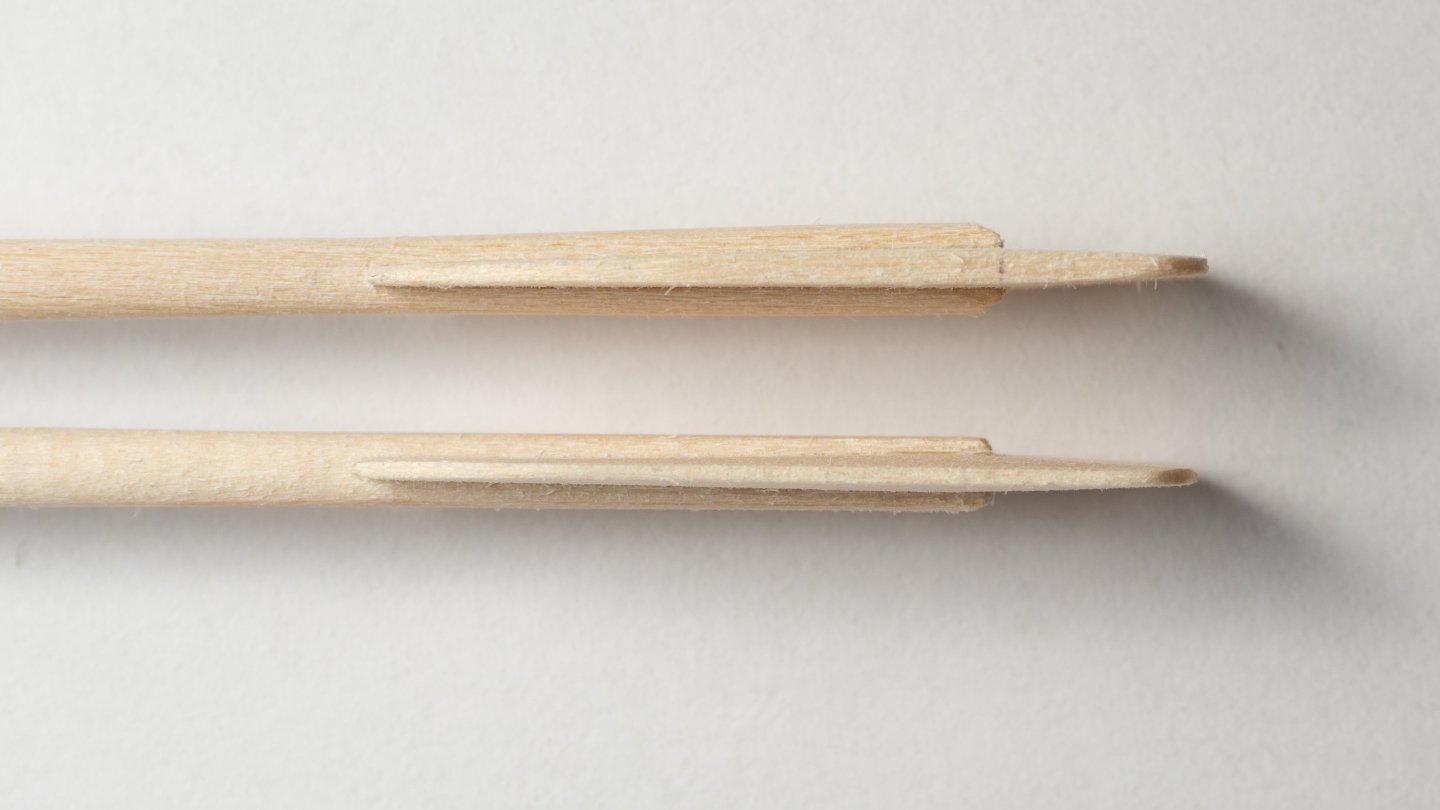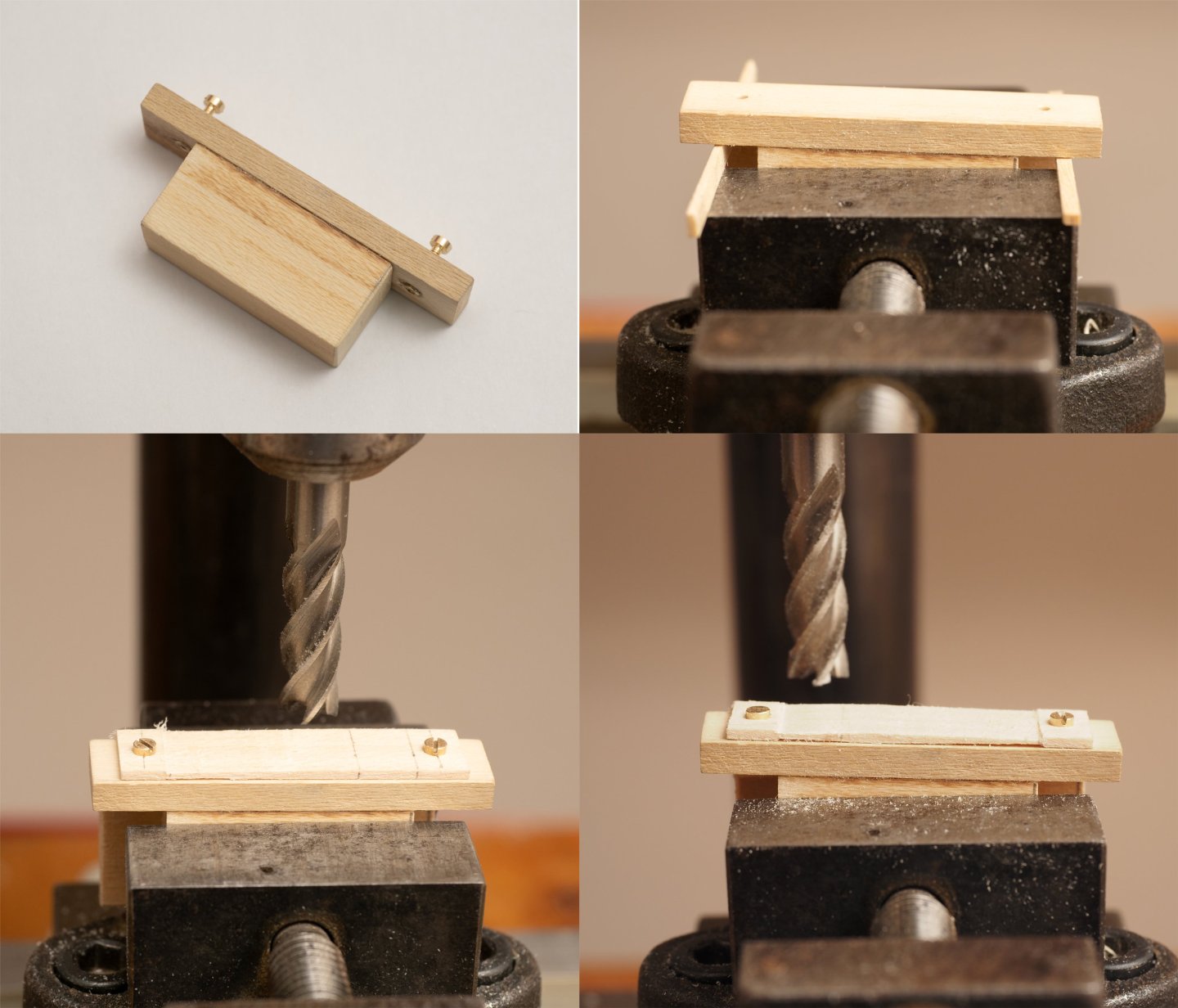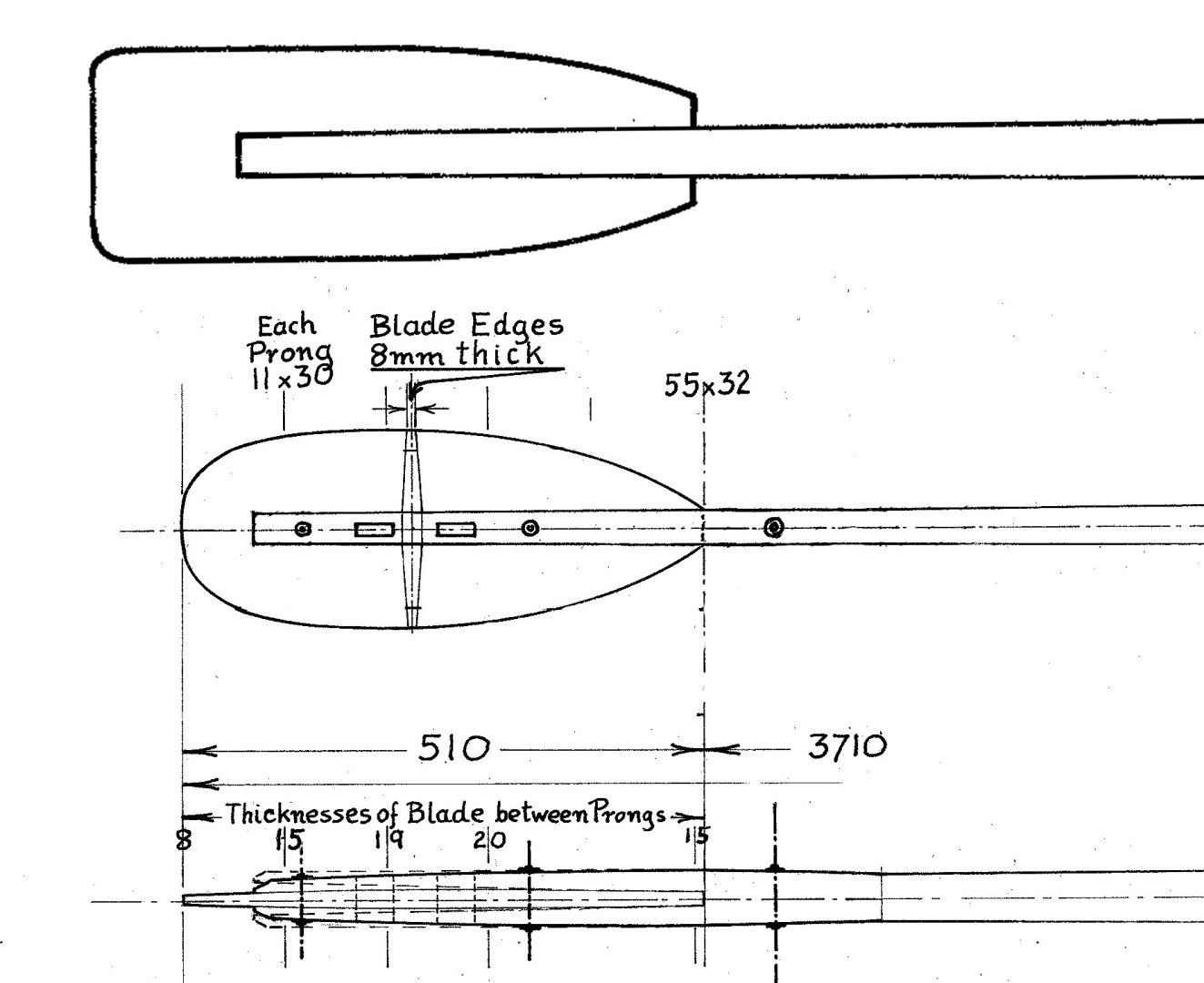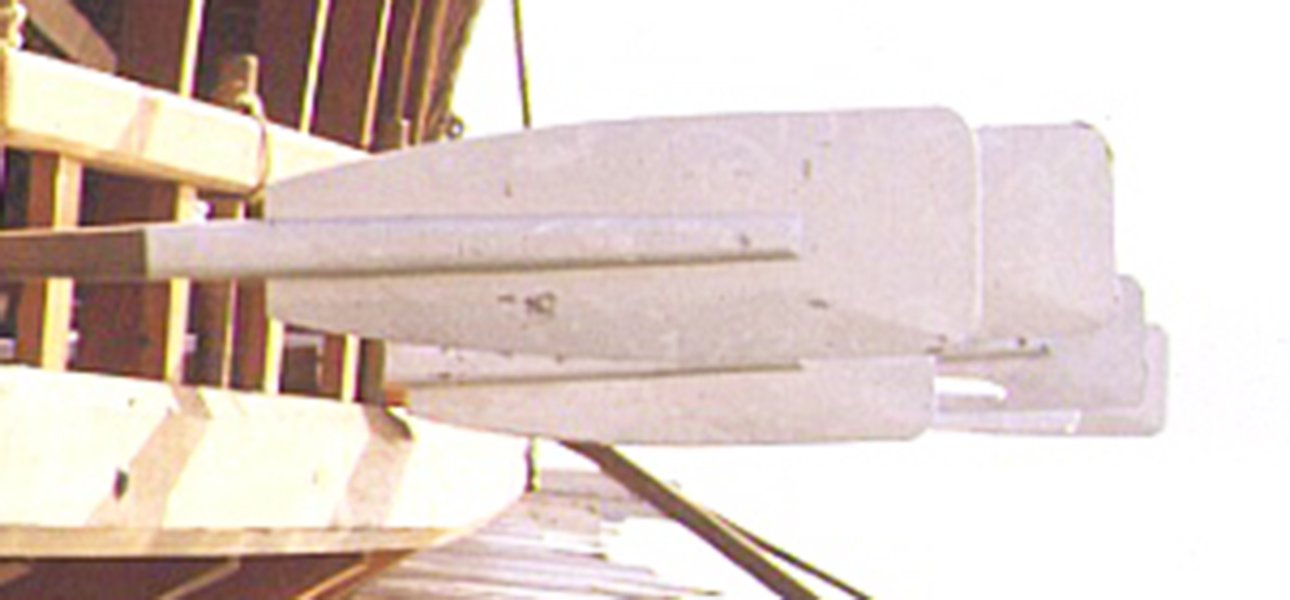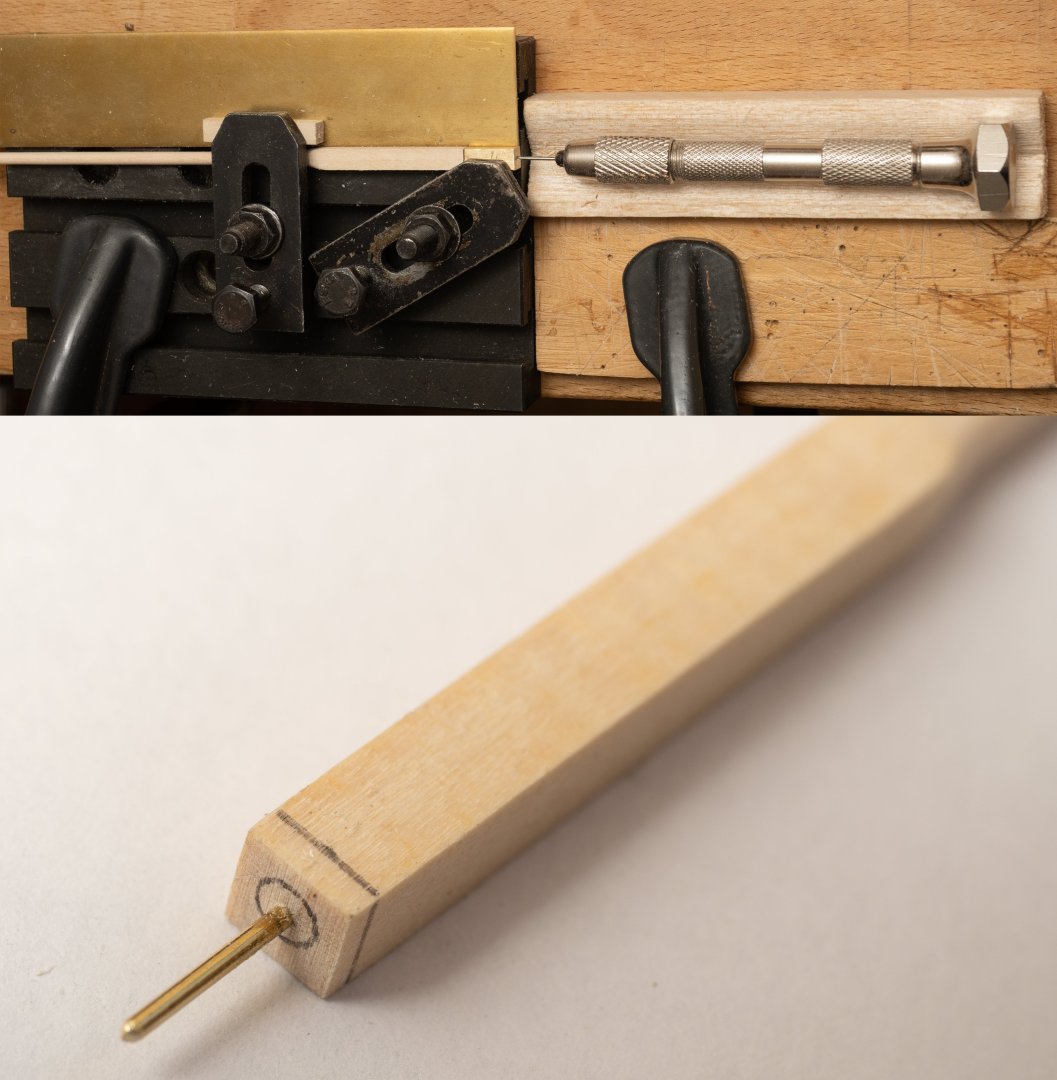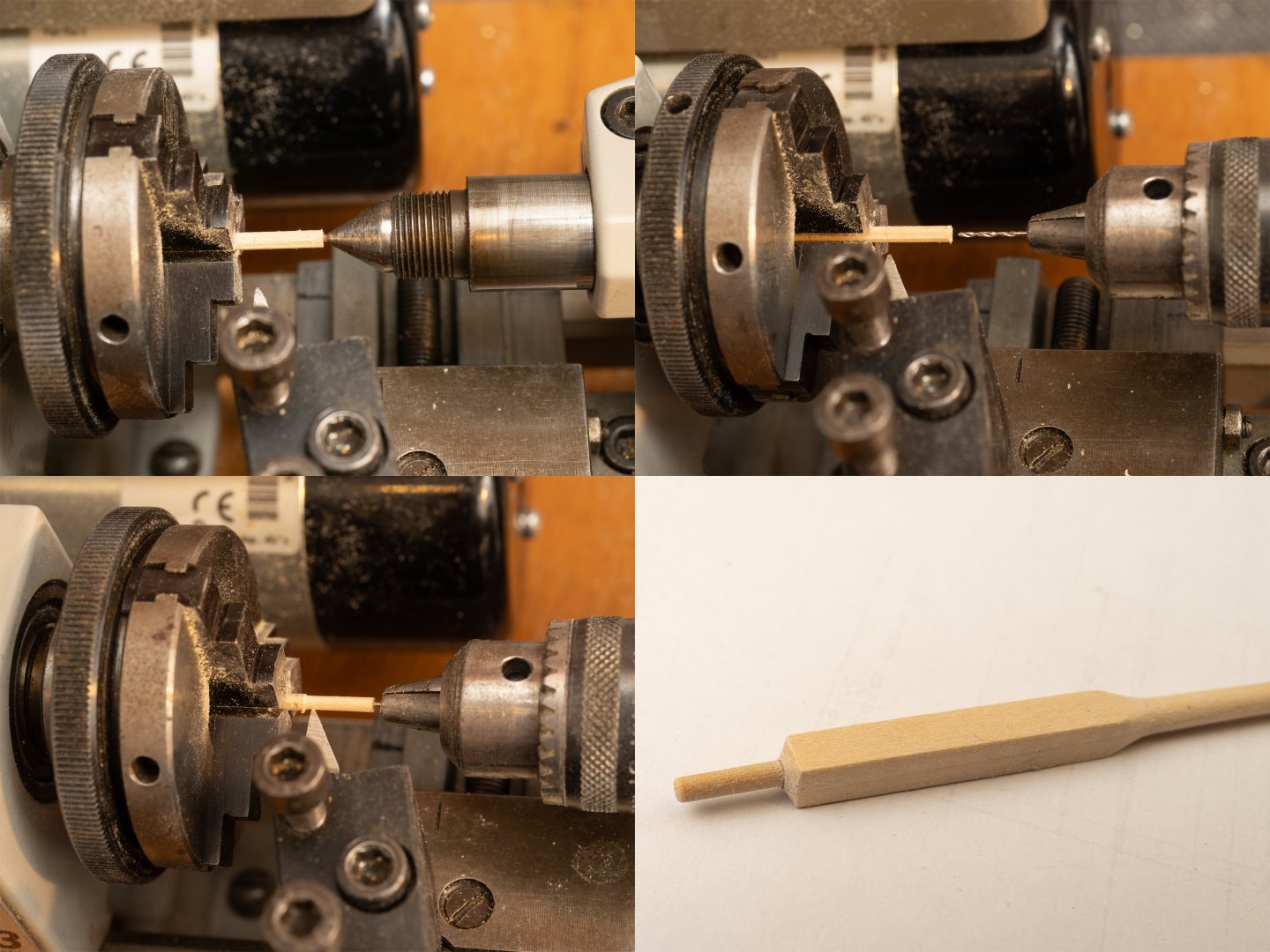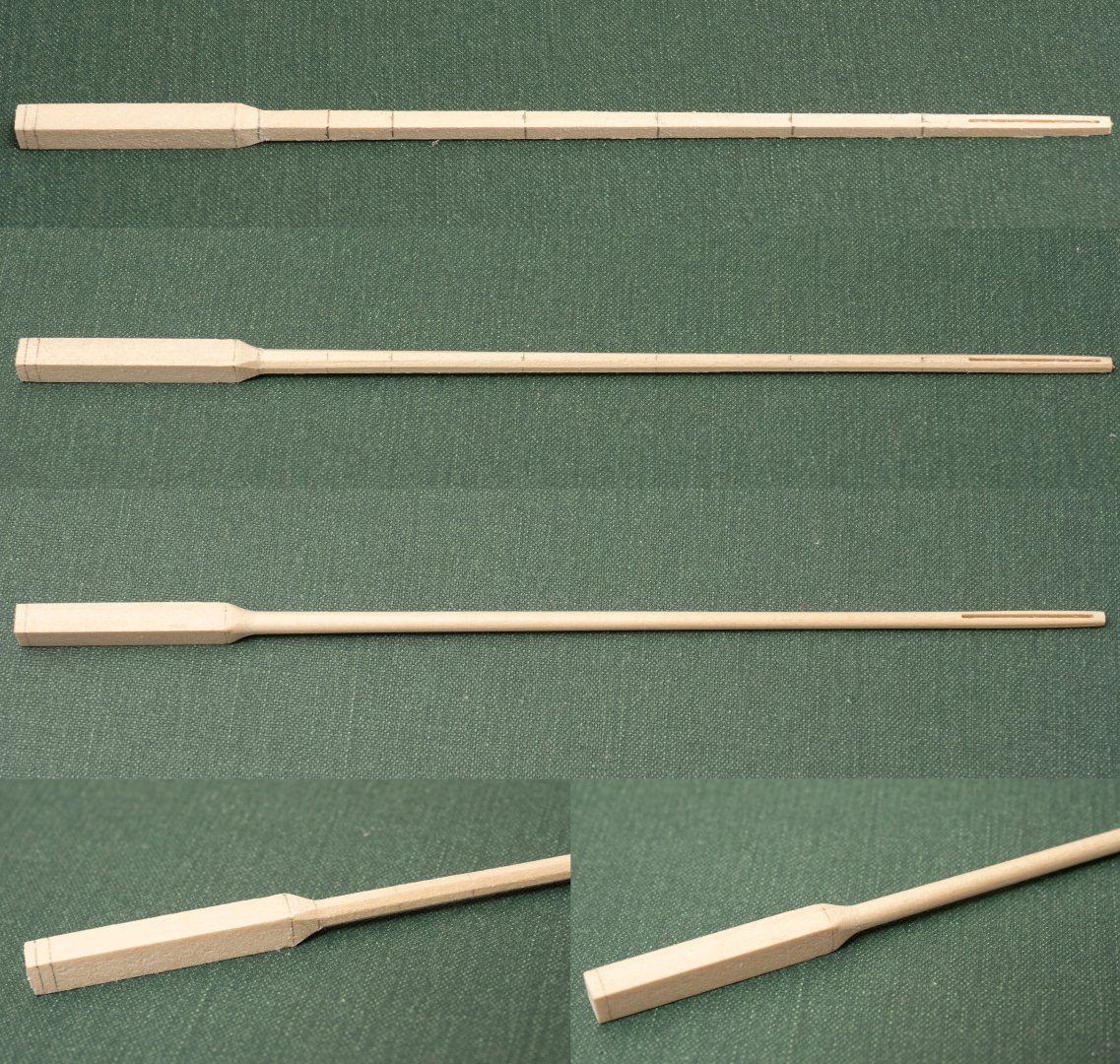-
Posts
220 -
Joined
-
Last visited
Content Type
Profiles
Forums
Gallery
Events
Everything posted by Richard Braithwaite
-
An exciting post about paint! I need to coat my oars. Shafts varnished and blades painted. Products Ive tried below: Four different trial combos below. 1. 4 coats of varnish just belond the boundary. 3mm Tamiya masking tape at boundary (with a varnish seal along edge) then 1 coat BIN primer (on bare wood) and 3 coats white matt enamel. 2. 4 coats of varnish over bothe areas. 3mm Tamiya masking tape at boundary (with a varnish seal along edge) then 1 coat BIN primer (on top of varnish) and 3 coats white matt enamel. 3. 3 coats white matt enamel on bare wood. 4. 1 coat Humbro undercoat (on bare wood) and then 4 coats of white matt enamel. The grey Humbrol undercoat seems to need a lot of coats of white enamel to cover it (it still looks a bit grey with 4 coats). Apparently the shellac in the BIN undercoat will slow the discoloration of the white paint by blocking any oils coming out of the wood, so Im probably going with option 1...although it seems a shame not to use the Humbrol Undercoat with the Humbrol paint...
-
Some statistics for the oars at this stage (i.e. shaping complete prior to painting) WEIGHT: So my oars scale at 11.71 kg/oar (without the brass pin from the handle) compared to 12.3 kg/oar on the full size Olympias (without the lead counterweights in the handles), so within 5%. The density of the wood Ive used is similar to the density of the Douglas fir used for these oars on Olympias, so that suggests that Ive got the dimensions about right (the weight will be even closer once Ive painted/varnished them...) LABOUR: So, to get to this stage has taken me 3.25 hours per oar (still to paint them...) which excludes the time I took to make the jigs, do trial runs etc... Duration wise its taken me about 4 months to make 62 of them which sugests that Im working about 1.7 hours per day on average. Its probably a bit more than that (given jigs etc.)...Probably about right, given Im not allowed to do this every day! Just to put this in perspective the cost of an oar for Olympias in 1987 is quoted as £300 (ref the Trireme Trials 1988)
-
All blades fitted... Now cutting a radius onto two of the faces of that thickened part of the oar shaft inboard of the thole pins... I tried grinding a radius into a scraping steel plate for this but found it difficult to make an even cut along the shaft (and avoif grain pullout...). Cutting a piece of plastic pipe in two longitudinally and then lining with sandpaper, however seemed to work surprizingly well, giving a consistant radius down the length of this part of the shaft. The lines drawn accross the shaft in the photo below are used for guidance (all gone when radius cut) in the usual way I use for controlling shape of shafts and spars during shaping. (extract of Plans 15 © Estate of John F. Coates, reproduced with permission).
-
Excellent model of an interesting subject. The morticed planking is a feature also found in much older vessels such as the Kyrenia ship (4th cent BC) and is also thought to have been the construction method that enabled long slender ships such as the fast Triremes of the 6th century BC to be built (effectively stopping the planks from sliding over one another and making the planking into an effective engineering shell able to withstand the high sheer stresses in such a vessel). (Ref The Athenian Trireme, Morrison and Coates) Also interested to see that your rig has a similar system of brails as fitted to the Trireme reconstruction Olympias.
-
Since turning the handle on this oar production line doesn't use up much mental bandwidth I've been listening to podcasts as I go. I've been finding the style of "The Rest is History" just about the right level to make the hours fly by... They have done a good series that gives the historical background to the significance of the Trireme in enabling the golden age of Athens and the development of their democracy, philosophy and art that has influenced Western Civilization so significantly in the centuries that followed. Thermopylae and Salamis: Athens and the Birth of Democracy: Herodotus, the birth of history: Sparta:
-

Gold solder for brass
Richard Braithwaite replied to Richard Braithwaite's topic in Metal Work, Soldering and Metal Fittings
Or, I suppose one could use silver solder and then get the whole thing gold plated! A nice consistent colour finish? (if a little shiny...) -
I actually find this production line stuff quite theraputic. Once all the thinking is done and I know what im doing I can just sit in my workshop and go through the motions, one after another. Not so much of an issue now Im retired, but I used to find it very relaxing after a stressfull day at work!
-

Gold solder for brass
Richard Braithwaite replied to Richard Braithwaite's topic in Metal Work, Soldering and Metal Fittings
This is what I need to make, its at 1:24th scale for my model of this Trireme ("Olympias") which makes its total length about 50mm. It fits over the wooden ram structure and will be about 0.5mm thick. Quite a challenge to fabricate, with a lot of joints... -
Next steps: Jig fixing tabs removed from blades and blades shaped to plan view using a ply template pattern (that same 0.5mm ply I was originally planning to use for the blades...) Blades fixed to oar shafts between prongs. As the slot between the prongs was milled to 0.5mm the prongs flare to accomodate the long taper on the blade (0.5 to 1mm thickness...) as can be seen in the upper part of the image below. Prongs tapered along the long taper of the blade to remove the flare (see sketch reconstruction of blades in previous post) the side taper (to bring the edges of the blade down to 0.5mm all round) was then done using a file and sandpaper by hand, as can be seen in the lower part of the image below. Total time taken for all this approximately 40 mins/blade. Quite a lot longer than just fitting 0.5mm ply blades and probably almost impossible to see the difference once they are finished and painted white, but so be it...
-

Gold solder for brass
Richard Braithwaite replied to Richard Braithwaite's topic in Metal Work, Soldering and Metal Fittings
Yes (about £10/5cm length) but only small quantities would be needed... -

Gold solder for brass
Richard Braithwaite posted a topic in Metal Work, Soldering and Metal Fittings
Has anyone tried 9 carrat gold solder for brass? I guess it might give a better colour match? If so how does it age? (I.e colour of solder as surrounding brass oxidises and darkens) -
Tapering of oar blades: Image top left: jig, made of holly to make it (hopefully ) robust enough for use with all 62 Thranite oar blades. Top right: set up in machinists vice on Unimat with spacers cut to incline the top surface or the jig correctly for the taper to be cut. In hthis case it is set up for the short taper which means a 1.25mm difference over the 30mm length of the vice. (0.4mm difference for the long taper). Bottom left: Long taper being machined (both sides) Bottom right: Short taper being machined (both sides) Finally 62 Tranite blades tapered (about 16 mins/blade...)
-
Finished fitting 62 handles to the Thranite oars... Now rethinking the blades. I havent been able to find drawings of the original Thranite oars in the Trireme Trust Archive. However there is a drawing showing how these were modified in 1989 to reduce their weight from 17kg to 6 kg by shaving down the shafts, and reducing the thickness and area of the blades. Extracts from the Midhsip Section (Plan 8 ) and the Modified Oar drawing (Plan 15e) show how the form of the blade was altered. The upper plan view is of the original form and the lower plan and section shows the modified blade. Extracts from Plan 8 and 15e( © Estate of John F. Coates, reproduced with permission) The oval form of the blade was also intended to make them slide over one another more easily to reduce entanglement. As you can see from the section view the blades were not simple flat pieces of wood, as I had originally planned for my model, but were tapered. The form of this tapering in the original design is sugested by this image of the full size ship. Ive reconstructed this form in the following sketch for my model: The lines in the plan view radiating from the end of the shaft prongs show the edges of the tapered faces which I will need to machine in the blades, although the photograph sugests that the inner faces were faired to remove any hard edge. So, I now need to make up some more jigs...
-
So, 62 oar shafts all tapered and rounded.... Next stage, making and fitting handles: The oar shaft is drilled to take a brass rod to act as a core for the removable handle and also as a bearing to the connector that will hold the oars in place within the boat. I machined a brass section to the same dimensions as the oar shaft drilled at its center to enable the drill to be properly aligned with the center of the oar shaft as shown below. The second image shows the brass rod in place and the oar shaft marked out for shaping the transition to the handle The oar handles are then drilled and turned befor fitting over the brass rod on the oar shaft as follows: The total time taken for all this is about 0.5 hour (if I'm working efficiently!). (Total cummulative time/oar, so far 2.25 hours...)
-
Im creating quite a lot of sawdust at the moment... So, improved dust protection of model required (it took a lot of time to hoover out all the accumulated dust and clean before I varnished last year...). I also wanted any cover to be transparent so that any darkening of the model (now its varnished) will be even. Found these 0.19mm Acetate Mylar sheets (300x600mm), which folded quite neatly over the deck (extending over the sides and covering all the oar ports).
-
Your ship is looking fantastic. I built the hull of my "Olympias" model is a similar way (planking first and then frames made to fit). My log starts after I had done this, but I think ive included some description somewhere... Interested to know if you made those frames to fit your planking or made them from patterns and then pulled the planking to fit them? I remember working on an old steel ship, which we were rebuilding to make a different sort of ship... I had designed a substantial, cambered frame to fit under a thin, lightly stiffened deck. Our shipwrights tried to fit it on a hot day. They made the frame with some extra material ("green"), craned it into place, marked it off to fit the undulations of the (old battered) deck and then took it back to the dockside to cut it to their marked shape. When they craned it back on board they found that the deck had changed shape (the sun was now shining on it from a different direction...). So they marked it off again and repeated the process. After repeating this a few times they had cut off all the "green" and then some. They called me to come down to the ship and asked it I minded that the frame was now quite a bit smaller than I had intended... The next day we tried again. We cut a new frame to the design shape (no "green") and pulled the deck down to fit it. Your hull planking is very light, have you had any difficulties with distortion as you fit your frames?
-
Next stage of making oars: 1. Mill the slot for the blade using a 0.5mm cutter: 2. Cut off end of oar (leaving a small part beyond the end of the oar slot to aid stability during shaping) and sand the shaft down to finished square section dimensions, including the transition from inboard oar loom to outboard shaft. 3. Mark up with "indicator" pensil lines along the shaft to assist with "octagonalising". 4. File/sand off corners to make an octagonal section (including the transition from the square section loom to the outboard shaft. I find the "indicator" lines helpful with getting the faces of the octagon even, aiming to get the resulting "dashed line" around the staft even. 5. Round the shaft until the indicator lines just dissapear (indicating the final dimensions all round have been achieved). 6. square off the end of the loom to the final dimension to accept the oar handle (this will still require finishing to transition to the round handle, once the handles are fitted). Total time for all this approximately 45 mins/shaft (Total cummulative time/oar, so far, 1.75 hours)
About us
Modelshipworld - Advancing Ship Modeling through Research
SSL Secured
Your security is important for us so this Website is SSL-Secured
NRG Mailing Address
Nautical Research Guild
237 South Lincoln Street
Westmont IL, 60559-1917
Model Ship World ® and the MSW logo are Registered Trademarks, and belong to the Nautical Research Guild (United States Patent and Trademark Office: No. 6,929,264 & No. 6,929,274, registered Dec. 20, 2022)
Helpful Links
About the NRG
If you enjoy building ship models that are historically accurate as well as beautiful, then The Nautical Research Guild (NRG) is just right for you.
The Guild is a non-profit educational organization whose mission is to “Advance Ship Modeling Through Research”. We provide support to our members in their efforts to raise the quality of their model ships.
The Nautical Research Guild has published our world-renowned quarterly magazine, The Nautical Research Journal, since 1955. The pages of the Journal are full of articles by accomplished ship modelers who show you how they create those exquisite details on their models, and by maritime historians who show you the correct details to build. The Journal is available in both print and digital editions. Go to the NRG web site (www.thenrg.org) to download a complimentary digital copy of the Journal. The NRG also publishes plan sets, books and compilations of back issues of the Journal and the former Ships in Scale and Model Ship Builder magazines.

